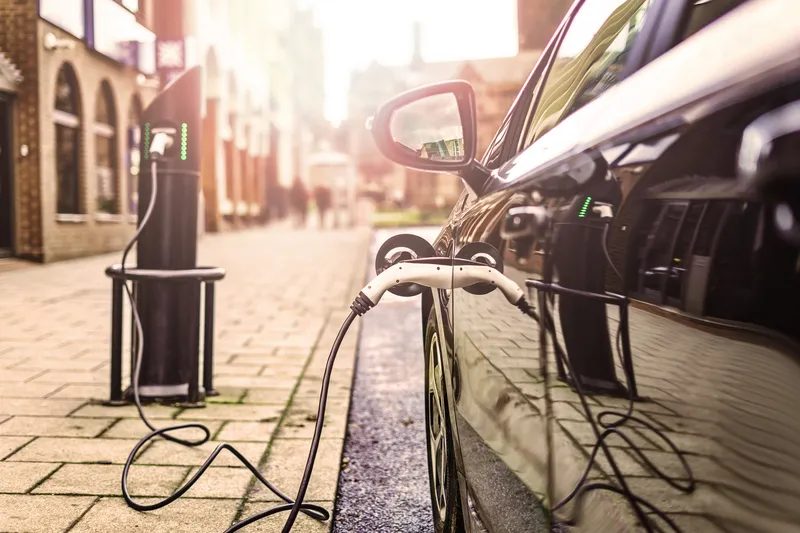According to the IDTechEx report Range Extenders for Electric Vehicles Land, Water & Air 2015-2025, over eight million hybrid cars will be made in 2025, with a range extender, the additional power source that distinguishes them from pure-electric. They will also be in buses, military vehicles and boats: a major new market overall. Today's range extenders consist of little more than off-the-shelf internal combustion engines. They are being replaced by second-generation range extenders - piston engines design
March 6, 2015
Read time: 2 mins
RSSAccording to the 6582 IDTechEx report Range Extenders for Electric Vehicles Land, Water & Air 2015-2025, over eight million hybrid cars will be made in 2025, with a range extender, the additional power source that distinguishes them from pure-electric. They will also be in buses, military vehicles and boats: a major new market overall.
Today's range extenders consist of little more than off-the-shelf internal combustion engines. They are being replaced by second-generation range extenders - piston engines designed from scratch for fairly constant load. Next, advanced rotary combustion engines such as the Libralato in the UK are coming centre stage with trials and rollouts in cars, planes and more.
Fuel generator range extenders have no separate shaft to a generator. Elegantly, they produce electricity directly. A rotary combustion engine has been made in this way and fuel cells also act as fuel generators as do the experimental free-piston engines that have oscillating pistons within magnets and coils. The ECE of KanLabs also comes in this category. Indeed, it has no moving parts, just producing electricity directly from heat.
Thermoelectric harvesting produces electricity from heat difference though ECE is not thermoelectric in action. It is an "external combustion thermal engine". Through thermal cycles of free-electrons in a metal or semiconductor, ECE converts thermal energy into electricity with high efficiency claims the company, reporting that its ECE for bikes, boats, robots and planes has three key components: thermal converter, inductor/capacitor resonant tank and controller/ switch. Between 100C and 850C, net thermal efficiency should be 42 per cent, they compute, way ahead of thermoelectrics. Any fuel can be used.
The report compares all range extenders but thermoelectrics, being much lower power, is not range extender material but rather a form of energy harvesting in the jargon. Nonetheless, this IDTechEx report forecasts the lower power needed over the years given assistance from fast charging and energy harvesting innovations ahead, including thermoelectrics. It forecasts the market over the coming ten years. Every aspect of the new range extenders is covered.
Today's range extenders consist of little more than off-the-shelf internal combustion engines. They are being replaced by second-generation range extenders - piston engines designed from scratch for fairly constant load. Next, advanced rotary combustion engines such as the Libralato in the UK are coming centre stage with trials and rollouts in cars, planes and more.
Fuel generator range extenders have no separate shaft to a generator. Elegantly, they produce electricity directly. A rotary combustion engine has been made in this way and fuel cells also act as fuel generators as do the experimental free-piston engines that have oscillating pistons within magnets and coils. The ECE of KanLabs also comes in this category. Indeed, it has no moving parts, just producing electricity directly from heat.
Thermoelectric harvesting produces electricity from heat difference though ECE is not thermoelectric in action. It is an "external combustion thermal engine". Through thermal cycles of free-electrons in a metal or semiconductor, ECE converts thermal energy into electricity with high efficiency claims the company, reporting that its ECE for bikes, boats, robots and planes has three key components: thermal converter, inductor/capacitor resonant tank and controller/ switch. Between 100C and 850C, net thermal efficiency should be 42 per cent, they compute, way ahead of thermoelectrics. Any fuel can be used.
The report compares all range extenders but thermoelectrics, being much lower power, is not range extender material but rather a form of energy harvesting in the jargon. Nonetheless, this IDTechEx report forecasts the lower power needed over the years given assistance from fast charging and energy harvesting innovations ahead, including thermoelectrics. It forecasts the market over the coming ten years. Every aspect of the new range extenders is covered.








